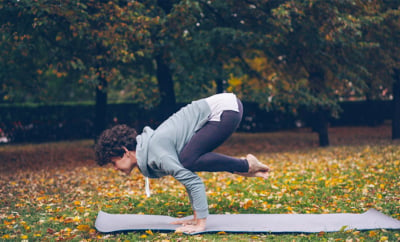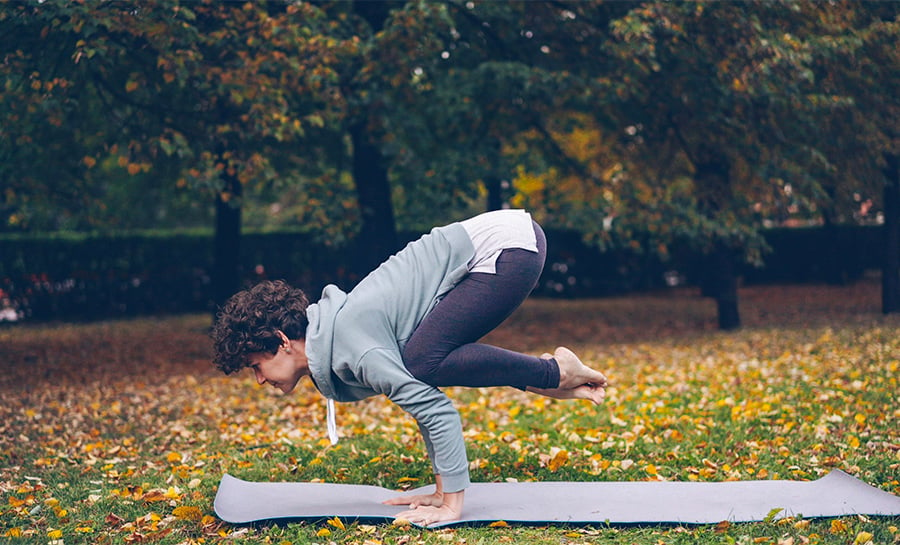5 Ways to Incorporate Sound Healing Into Your Meditation Practice

Have you ever tried to meditate in a loud or sonically unpredictable space? Sound healing meditation is a way to tune out the external chaos and drop into the internal world.
I’ve found myself meditating – or at least making my best attempt to meditate – in places like airplanes, crowded beaches and other public places and it’s not easy!
Don’t get me wrong, sometimes I can manage to tune out of my surroundings and tune into myself, but it adds a level of difficulty and usually doesn’t last too long.
The Science of Sound Healing
Sounds have such a direct and profound impact on our nervous system that the sonic environment in which we meditate can make a huge difference on the experience, and ultimately, its effectiveness.
Consider for a moment the way your body reacts to a sudden, loud sound (like an alarm going off or your roommate knocking something over in the next room).
Whatever the origin, it triggers our sympathetic nervous system, or fight-or-flight response, in our body before our mind even has a chance to decipher where the sound came from.
This Is How Yoga Impacts Your Fight or Flight Response, According to Science
In these moments, our sympathetic nervous system releases stress hormones to prepare our body to face a dangerous situation.
So when we are in spaces that might produce random sounds that trigger this response, our subconscious mind is keeping half an eye open, so to speak, making it a bit more challenging to fully relax, yet alone transcend into a meditative state.
How Sound Impacts Our Yoga Practice + State of Being
With that said, we can also harness this power of sound to trigger a relaxation response in our nervous system (also known as the parasympathetic nervous system, or rest-and-digest state) to facilitate and deepen our meditation practices.
In this state, our body and mind are able to counteract stress while making a perfect landscape to facilitate a calming meditation.
Sound Healing 101: Everything You Need to Know About This Practice
As Dr. Mitchell L. Gaynor notes in his book The Healing Power of Sound:
“If we accept that sound is vibration, and we know that vibration touches every part of our physical being, then we understand that sound is “heard” not only through our ears but through every cell in our body.”
He continues by saying:
”The sound of our voices, entrained with the sound of the singing bowl, permeates our entire being … We enter a state of consciousness that allows us to witness our lives from a calmer, more meditative perspective.”
5 Ways To Explore A Sound Healing Meditation Practice:
Here are a few of my favorite ways to incorporate the healing effects of sound into your meditation practice.
1. Audible Exhales
Beginning a meditation session with a few minutes of audible breathing can be an incredible way to give yourself a dose of sound healing vibrations while connecting your breath and body.
When you first get into your comfortable seat (or preferred meditating position), close your eyes and take a deep inhale into the belly.
Exhale out through the mouth on an “ahh” or “ohh”. You might notice that the exhales get longer and longer as you go. This can really help slow the breath and get you into a relaxed state.
2. Vocal Toning
To take things a step further and to add a deeper element of healing, you can try vocal toning.
Before you begin a sound healing meditation, call to mind any healing intention or issue you might want to focus on for the exercise.
For example, let’s say you are dealing with a recent breakup and want to focus on releasing grief.
Again, inhale through the nose then exhale on any note or vowel sound that feels comfortable and that might resonate with any stuck energy you might feel in your body. While you’re doing this, visualize any emotional or physical pain breaking up inside.
7 Yoga Poses That Will Improve Your Singing (Because Yes, Yoga Helps!)
This can feel a bit awkward at first. The trick with vocal toning is to let go of any expectations and the idea that it needs to sound “good” or “pretty” and instead focus on the vibrations you create within your body.
We can harness the power of sound to trigger a relaxation response in our nervous system to deepen our meditation practices.
The lower notes are felt more in the chest, upper belly and throat while higher notes are felt in the head and sinuses. Play around with different notes and vowel sounds to see which feel best.
Notice how different you feel before and after – even for just two minutes – and how it sets you up for a powerful meditation.
3. Mantra Chanting
Building off of vocal toning, we can also utilize the energy of our own voice to connect with the ancient practice of mantra chanting in your meditation.
Instead of vocalizing a random note or tone, mantra chanting involves more established notes and words with various meanings and intentions behind them.
As someone who practices Transcendental Meditation, a form of silent mantra chanting, audible mantra chanting has been a really wonderful addition to my morning routine. One of my go-tos that I recommend is this 11-minute 11-second Om Hari mantra.
As you can imagine, there are endless mantras you can choose to chant with different meanings and lengths, so take some time to look around on Youtube, Spotify, etc. to find one(s) that resonate with you.
You can make chanting a part of your morning or evening ritual to tune into your breath and body. The added intention behind the mantra can also be an amazing way to manifest and call in more of what you desire in life.
3 Sanskrit Mantras to Boost Your Meditation Practice
4. Playing an Instrument

An amazing and intimate way to experience the frequency of sound in a meditative way is by playing an instrument yourself during your meditation.
You can turn essentially any instrument into a healing tool with the right intention, but I prefer to use crystal or Tibetan singing bowls, tuning forks, chimes, drums, gongs or harmoniums.
The frequencies from these instruments in the room with you create a much more powerful sound healing meditation experience than just listening to recordings.
Our body and mind are able to counteract stress while making a perfect landscape to facilitate a calming meditation.
When playing your instrument, be sure your body is as relaxed as possible and allow your breath to sync to your playing.
You don’t have to necessarily play throughout the entirety of your meditation session, playing for a few minutes at the beginning and/or end will still help trigger that relaxation response and allow for a deeper experience.
5. Passive Listening
Perhaps the most obvious way to incorporate sound healing into your meditation practice is through passive listening to healing music in the background.
As you know, there are millions of options for what kinds of music resonate most with you – whether they be sounds from nature, deep synths or singing bowls – that can all be streamed online (one of my favorite resources is Meditative Mind on Youtube).
Simply hit “play” before you sit for your meditation and allow the sounds to ground you and give your mind something to focus on.
Pay attention to your breath and whenever you find your mind wandering, bring it back to the sounds and allow that to be the mental anchor that helps to guide you through the meditation.
Sound Healing Meditation Is Music for the Soul
Being intentional with your sonic environment can really make your meditation feel much more relaxing and maybe something you look forward to even more!
Try any and all of the above recommendations to see which resonates with you most. Perhaps you’ll find that certain ways of incorporating sound are best for when you meditate at different times of day, cycles of the moon, or seasons!


This Month's Letter
From the Editor
Monthly motivation and food for
thought from our founder.

























